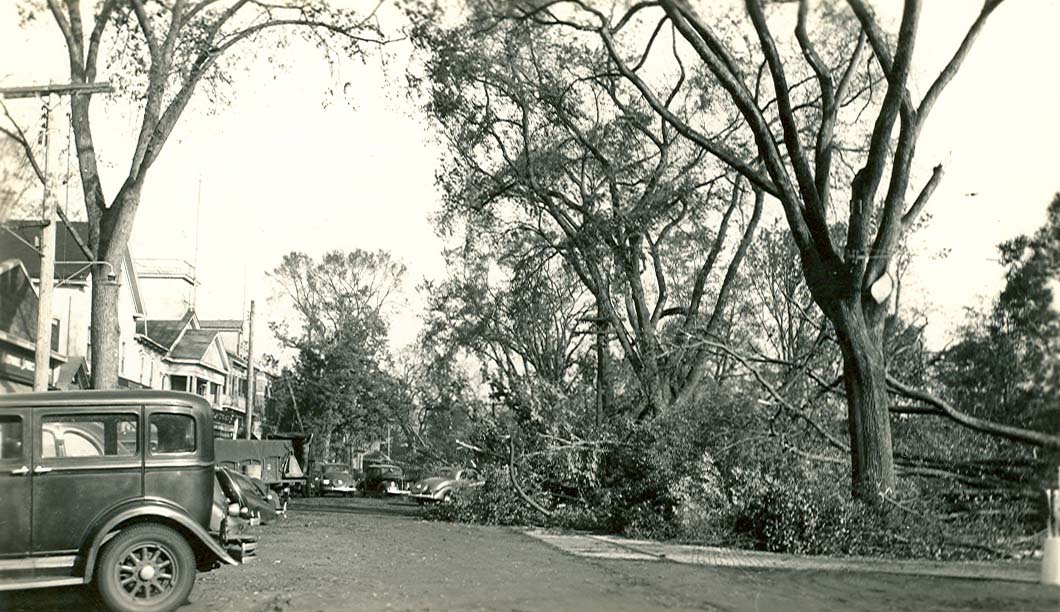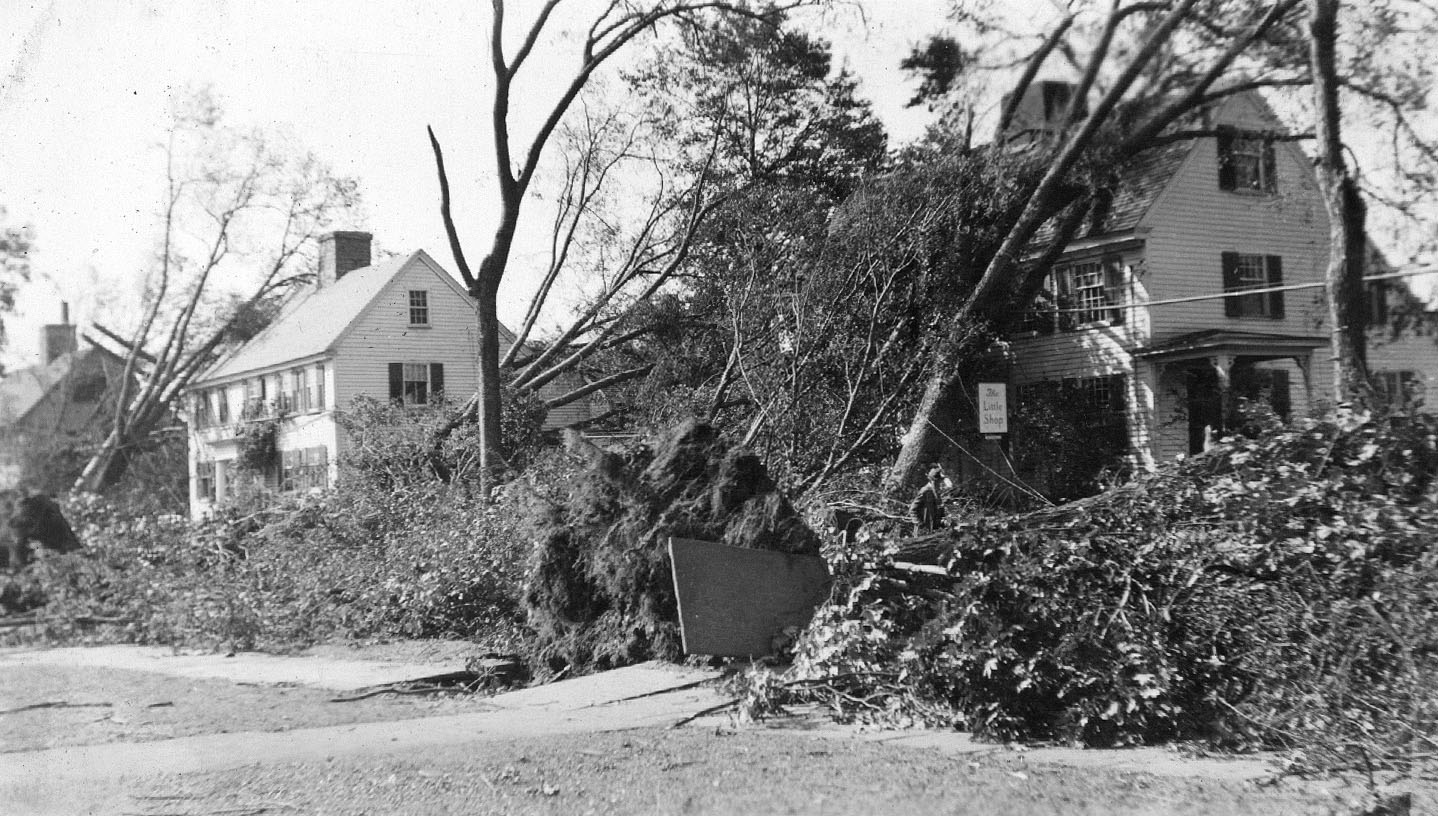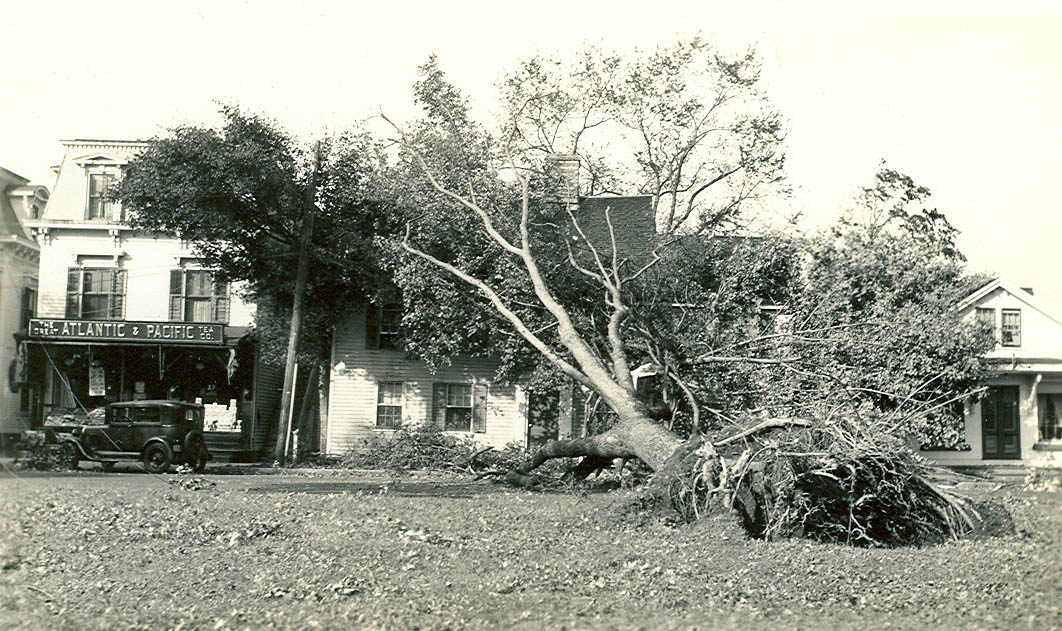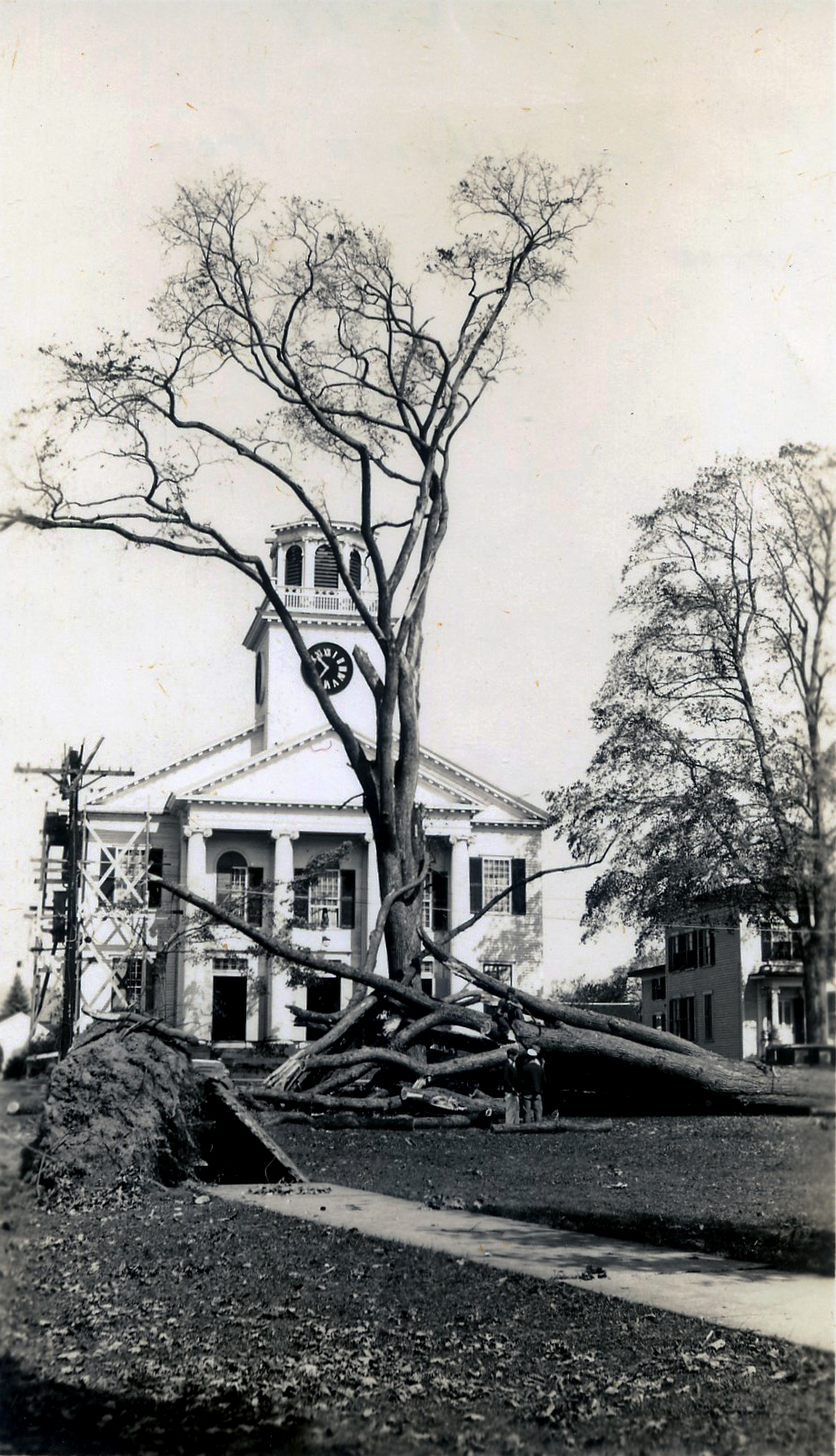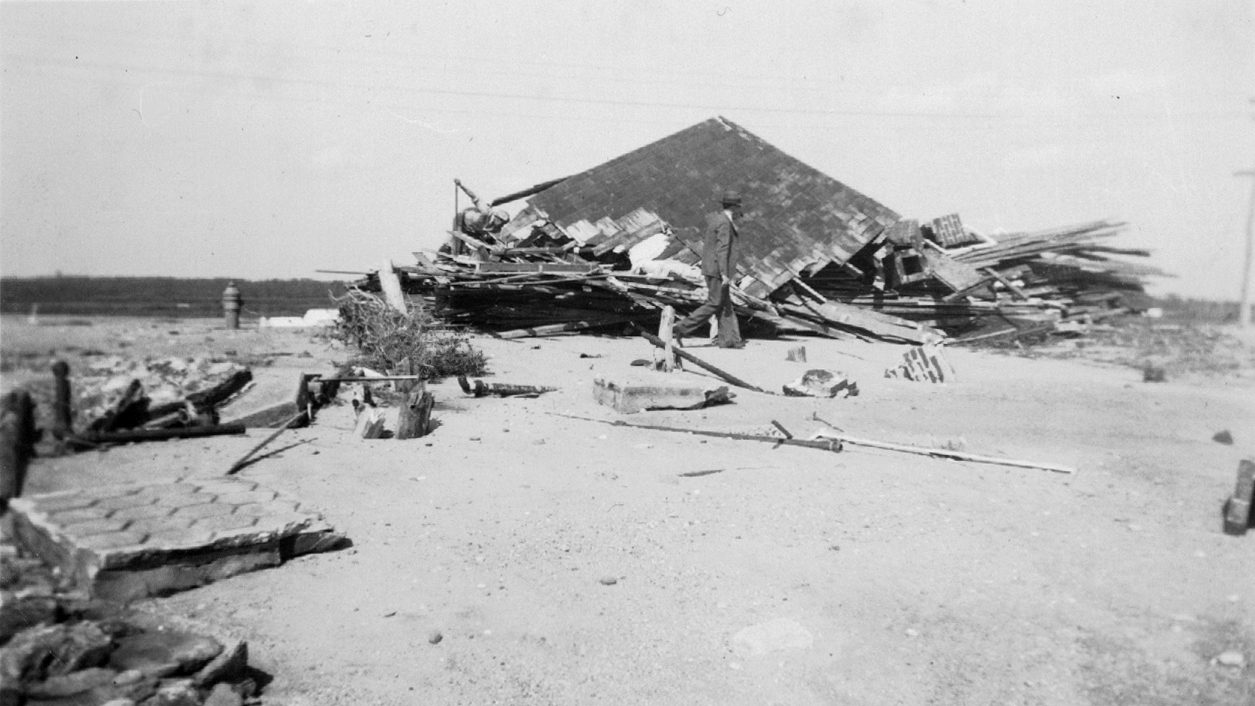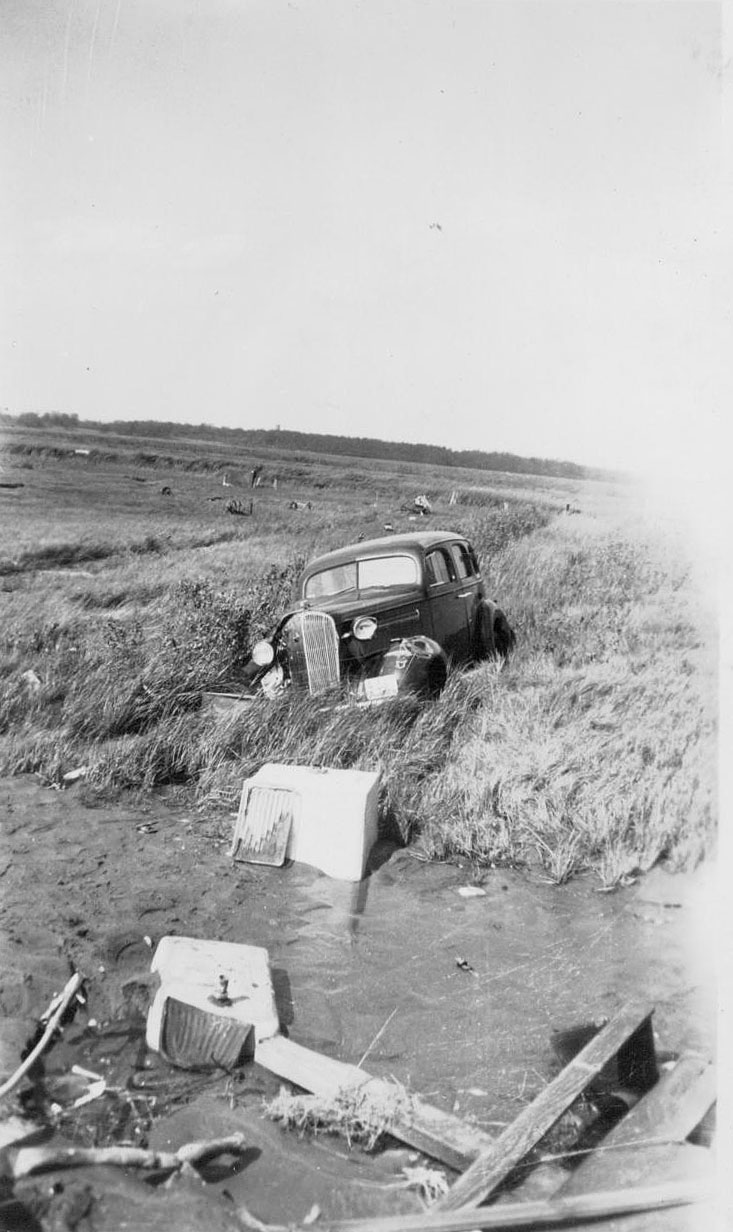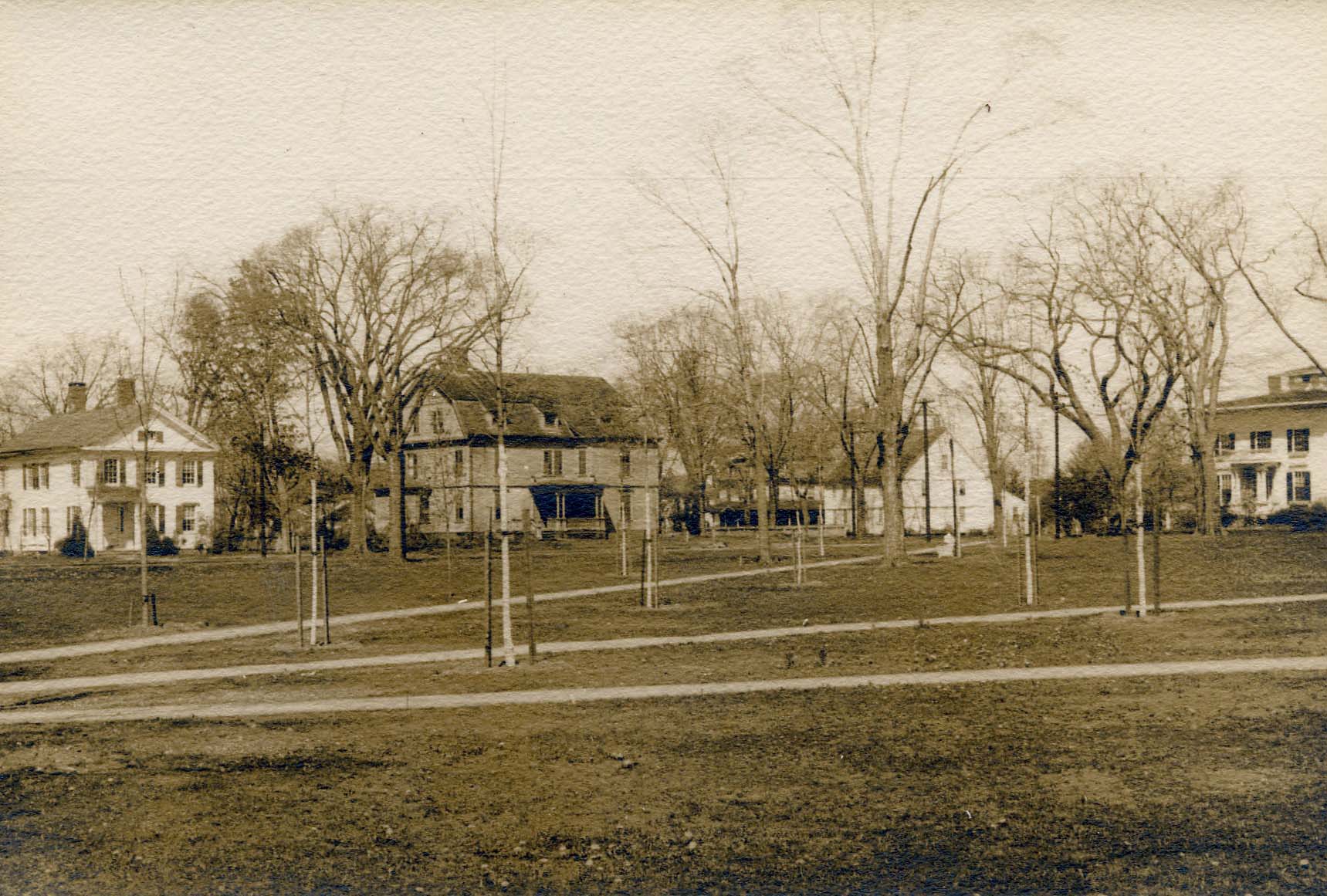
The Great New England Hurricane of 1938 caused hundreds of deaths, destroyed thousands of homes, businesses and marine vessels, and felled large swaths of forest. It remains, to this day, one of the deadliest and most destructive cyclones to hit the United States.
The storm developed near the Cape Verde Islands on September 9, tracking across the Atlantic and up the Eastern Seaboard. The storm hit Long Island and Southern Connecticut on September 21, in spite of a weather forecast calling for relatively calm weather. Due to the lack of technology at that time, Connecticut residents were not warned of the storm’s arrival and had no time to prepare or evacuate.
The shoreline had experienced significant rainfall in the days preceding the hurricane and the ground was saturated. In addition, the dual effect of the autumnal equinox coupled with a new moon had already produced the highest astronomical tide of the year. The tide height can be seen in the photo of the West Bridge, below.
The storm raced ashore near New Haven, producing storm tides of 14 to 18 feet across most of the Connecticut coast. An additional five to seven inches of rain fell, coupled with sustained hurricane force winds that uprooted trees by the millions, and destroyed buildings, roads and railway tracks. The eyewall of the hurricane passed over Guilford, so that trees that had been uprooted by the front side of the hurricane were picked up again by the back and deposited in the opposite direction!
Mr. and Mrs. Frank Douden, of Guilford, were aboard the Catskill, the ferry from Orient Point on Long Island to New London. They were three-quarters of the way across the Sound when the captain realized that the storm’s rapid intensification would make docking at New London very dangerous. The ferry rode out the storm on the water, with all on board wearing life jackets. They landed safely the following day at Groton as the dock at New London had been destroyed. The Doudens returned to Guilford the same day and ultimately learned that their Madison beach cottage had been destroyed and Mrs. Douden’s Buick was deposited in the marsh. Photos of the cottage and car are part of our Historical Room collection and are pictured below.
Edith Nettleton was working in the library that day, as she had been since the library opened in January 1934. With no electricity, she worked by candlelight and watched as trees toppled on the Green. Her car, parked on the north side of the Green, miraculously escaped any damage. Roads were impassable immediately after the storm, so when it was safe to do so, she walked home to Clapboard Hill Road. You can listen to Edith Nettleton’s experience of the hurricane in an oral history recorded by Nona Bloomer.
Ms. Nettleton personally gathered and archived many important mementos of Guilford history, including the photos presented below in remembrance of the Great New England Hurricane of 1938.
Listen to Edith Nettleton recount her experience of The Great New England Hurricane of 1938 to local historian, Nona Bloomer.
Click on any photo to view it in full size.

